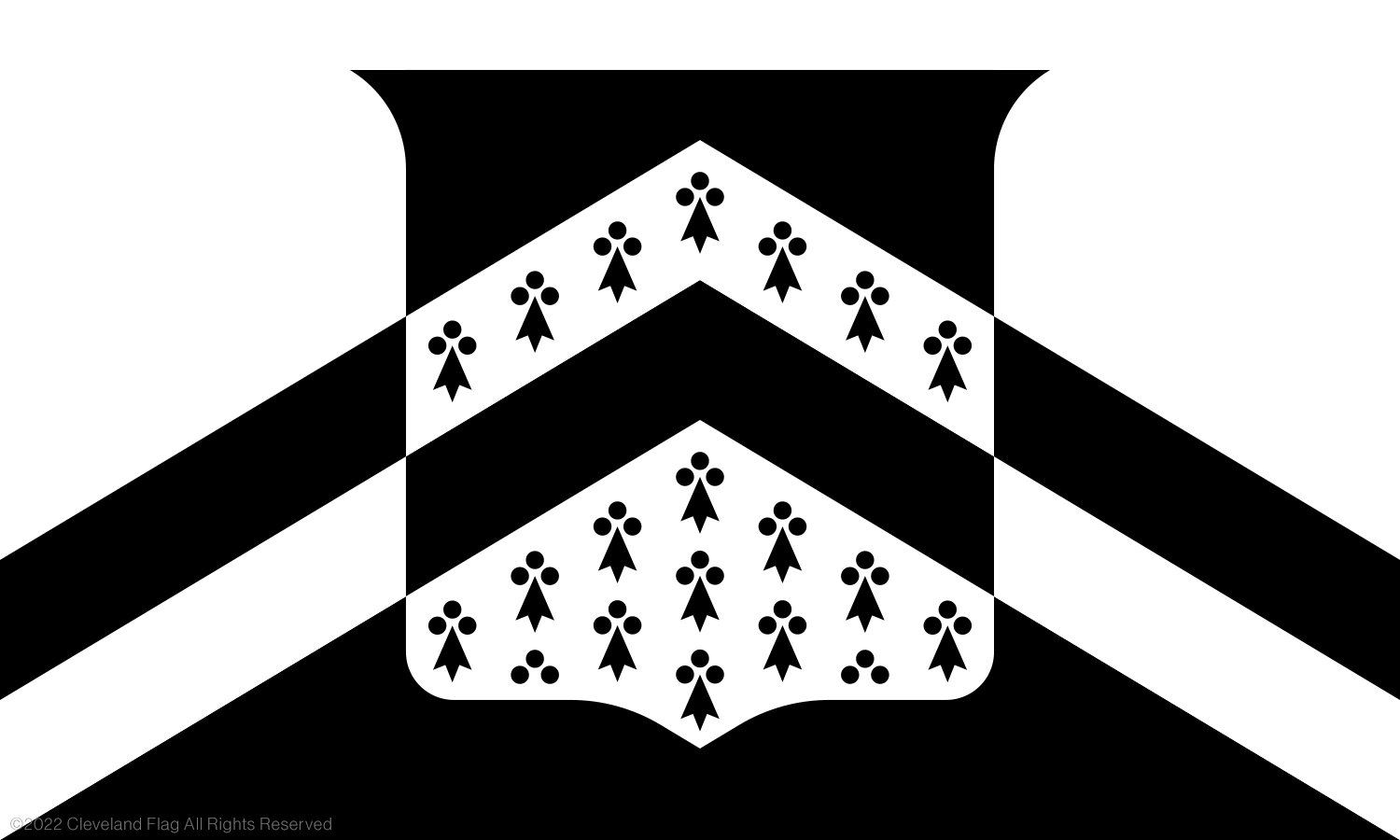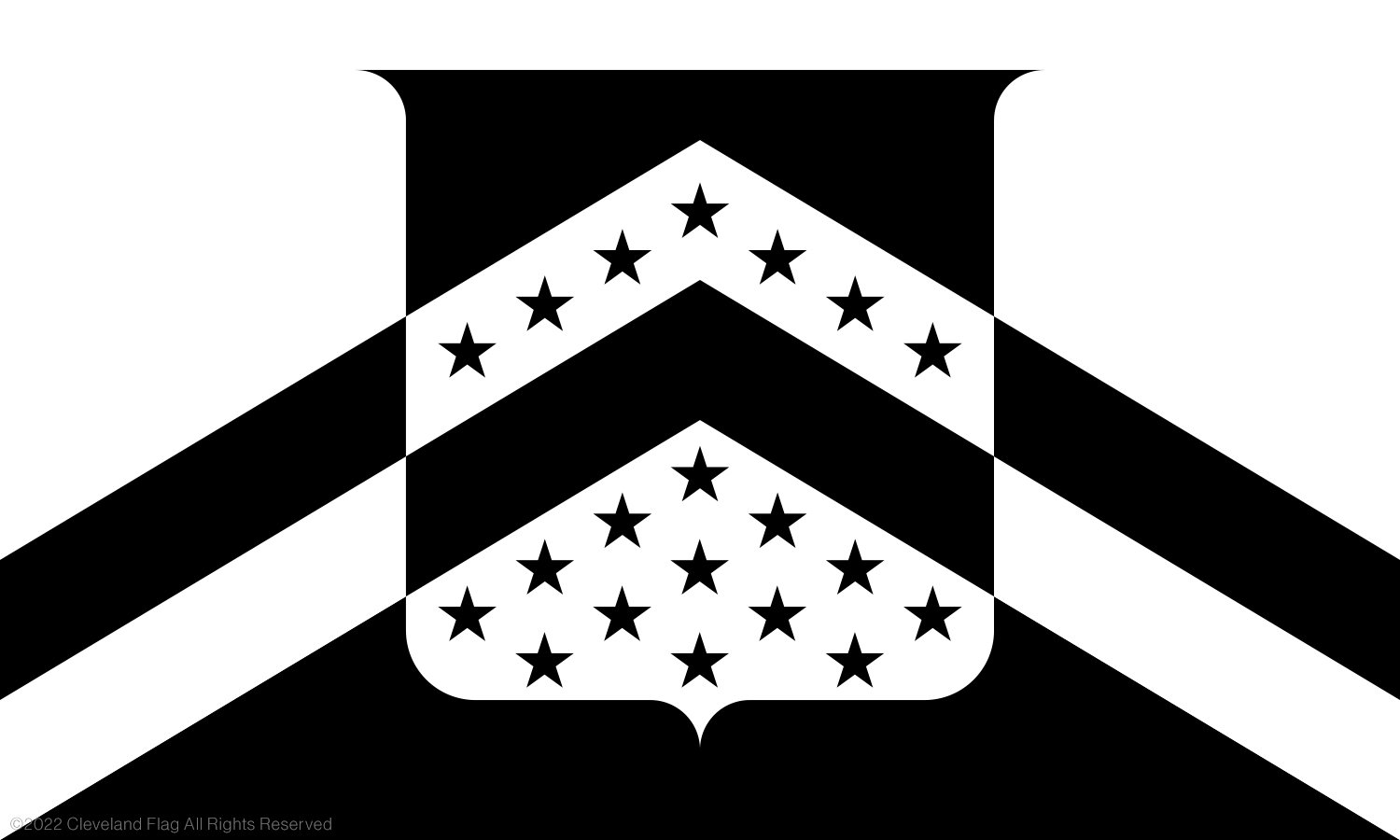
cleveland flag
about flag 10
On July 22, 1796, Moses Cleaveland, a Connecticut General and shareholder in the Connecticut Land Company, founded the city of Cleveland on Lake Erie’s south shore and the Cuyahoga River’s east bank.
Then he left.
It is perhaps not the most moving of historical narratives, but it is Cleveland’s historical narrative. The tenth Cleveland flag design pays tribute to the man who founded the city and leant it his name, although the city’s spelling would later change.
One story suggests a member of General Moses Cleaveland’s 1796 survey team misspelled the name on the city’s original planning map. The more widely accepted story is that one of Cleveland’s early newspapers, The Advertiser, could not fit “Cleaveland Advertiser” on its masthead, so the A was deleted to make room. Time passed, the city of Cleveland grew and the new spelling became the only spelling.
The flag design borrows from the Cleaveland family coat of arms and English heraldry. The family name dates back to York, England, in the 1300s. Throughout the Middle Ages, the influence of French, Latin and other languages affected the spelling of family names. As such, the coat of arms encompasses a variety of alternate spellings, including: Cleveland, Cleaveland, Cleiveland and Clyvland. It is thought that the coat of arms was first granted to Sir Guy de Cleveland, who commanded English spearmen at the Battle of Poitiers on September 19, 1356. In 1403, the family dropped the “de” from the name and it remains “Cleveland” to this day.
Heraldry has influenced flag design for centuries. Many modern flags have a connection to distinguished families and their coats of arms. The Amsterdam flag is based on the noble Persijn family’s coat of arms. In the United states, the popular flags of Maryland and Washington D.C. are based, respectively, on the coats of arms of Cecil Calvert, the second Baron of Baltimore, and George Washington, first President of the United States of America.
In heraldry, tincture is the system of nine colors, comprising two metals: white (for silver) and yellow (for gold); five colors: red (gules), black (sable), blue (azure), green (vert) and purple (purpure); and two furs: ermine and vair. The Cleaveland or Cleveland coat of arms is black (sable) and ermine (one of the furs). Black is rarely used in heraldry, except for very old and distinguished families. Ermine resembles the white winter fur of a stoat (a type of weasel) with a black-tipped tail. It is the classic white fur with black dots associated with royal cloaks and crown linings.
The result is a striking black-and-white flag that connects Cleveland to its founder. The flag features a black shield on a white field. Two ermine chevrons cross the shield and extend, reversed, to the flag’s lower hoist (left) and fly (right) sides. In heraldry, white stands for silver and black represents sable, a species of marten with dark fur.
For the city of Cleveland, however, the symbolism behind the colors has changed. White is for the city's future and black is for the city’s history, including its 1796 founding. Thus, the two opposite colors come to represent everything the city was and everything Cleveland can be.
Black-and-white flags are less common than their colorful counterparts. Two prominent examples of black-and-white flags include the Cornwall flag and the Brittany flag, which also features the ermine pattern.
This Cleveland flag redesign is built on a 1:6 grid. Scroll down for the flag’s alternate design. See how this Cleveland flag design compares to other Ohio city flags.
alternate design
The alternate version of the tenth Cleveland flag redesign replaces the ermine fur pattern with stars. While a significant design departure from the Cleaveland family coat of arms, the new star pattern makes the flag relatable and unique to the city.
While the design pays tribute to General Moses Cleaveland, who founded the city in 1796, the new 20-star pattern recognizes Cleveland’s centennial celebration 100 years later in 1896, which lead to Cleveland adopting it’s first and current flag (twenty stars times each star’s five points is 100).



















